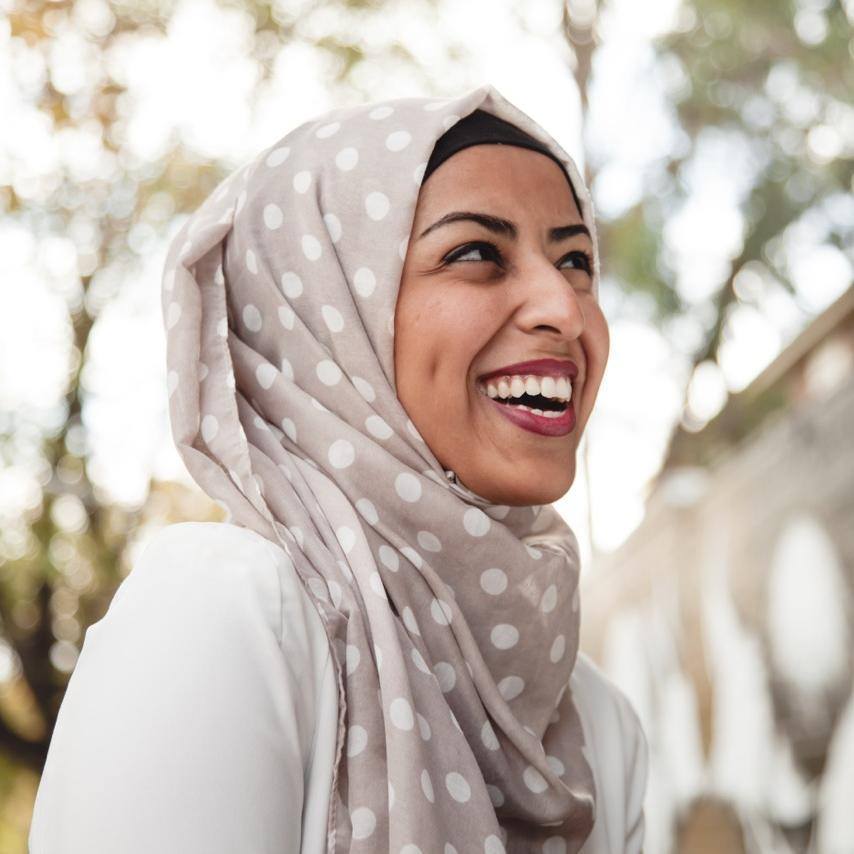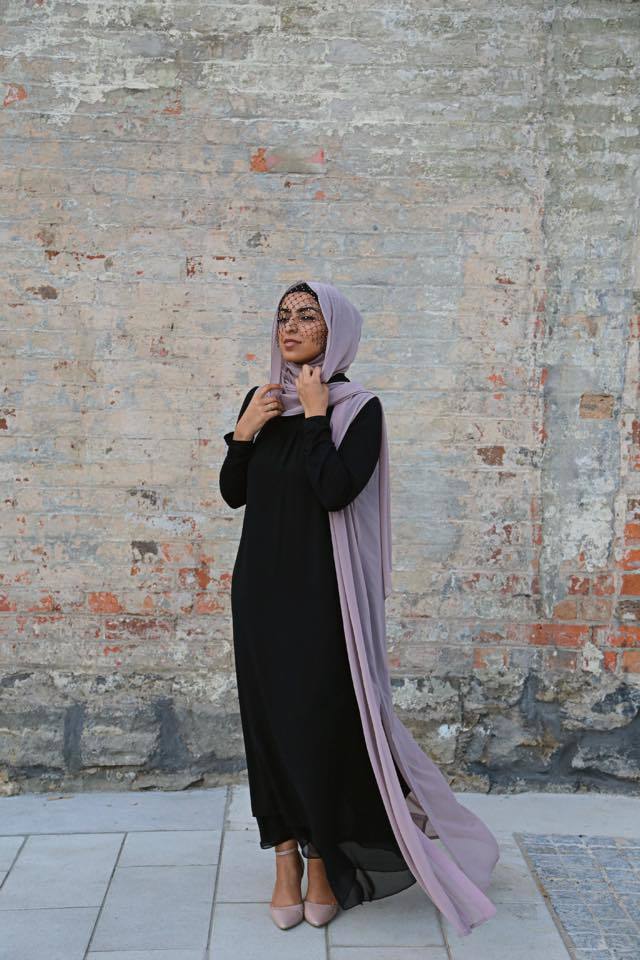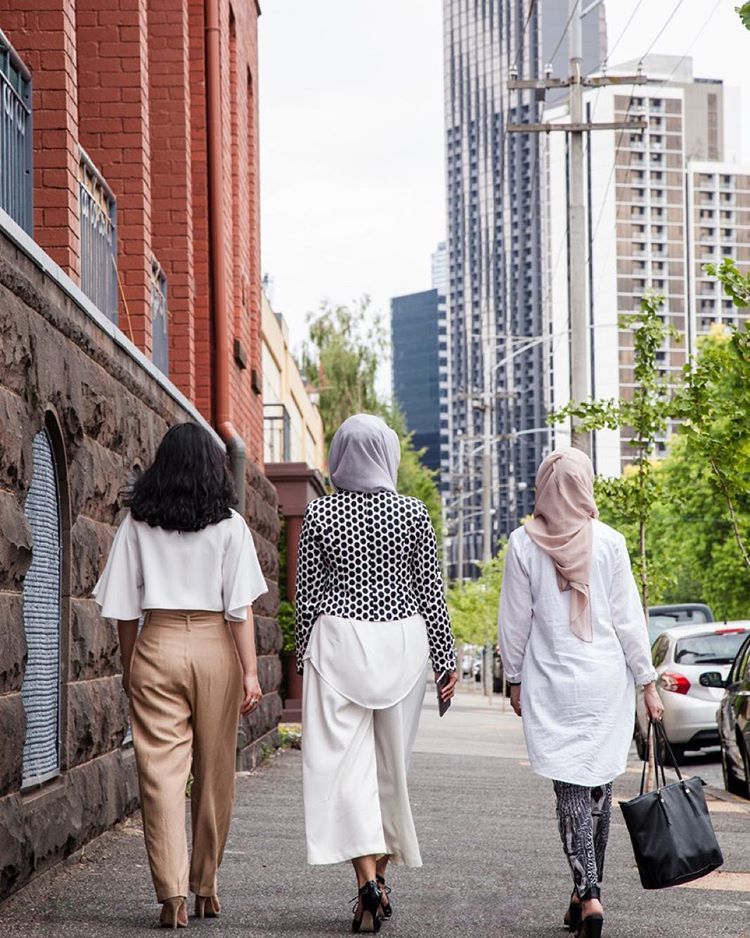When Dolce & Gabbana launched their first hijab collection earlier this year, they joined the growing list of major brands looking to move into the untapped Muslim fashion market. In the past, DKNY, Oscar de la Renta and Tommy Hilfiger have all dabbled in modest fashion, and just last year highstreet giant Uniqlo collaborated on a one-off collection with popular Muslim fashion designer and blogger Hana Tajima.
Despite growing attention from the high-fashion world, there’s still a real lack of options for modern and fashion-conscious Muslim women. As a result, many have literally taken matters into their own hands. Online, scores of young, trendy hijabi bloggers, are sharing tips on how to style mass-market clothing to suit their needs. Others, like Melbourne-based Zulfiye Tufa, behind the popular blog The Hijab Stylist, are even starting their own labels.
26-year-old Zulfiye designs clothes in her spare time, posts styling tips online to her bevy of social media followers, and has most recently launched ModMarkit—a secondhand clothing resale market and platform for independent-designers selling modest fashion. Her aim is simple: to create and style modest clothing that doesn’t make the wearer look like a walking piece of fabric.

Hey Zulfiye, so what was the motivation for creating a fashion range?
Mainstream fashion doesn’t take modesty into account, and if it does it’s only a trend that comes and goes. We needed something that’s there all year around. It’s about how to be creative with your style so you don’t look like a piece of fabric walking around. I’m not making something no one’s seen before, I am trying to fix a problem.
What do you mean by “fix a problem”?
I mean modifying what is already in fashion, or “hijab-ifying” that to meet the guidelines or criteria of what women who wear headscarves, or dress modestly can wear.

You started sewing when you were pretty young – do you remember the first thing you made?
I think it was a circle skirt. I made it to reach my ankles, then made it in 15 different colours. I felt like fashion was an area of my life I was stunted because of the lack of options available to me—I hated free dress days at school. I wasn’t able to wear clothing that represented who I was. Before I made my own clothes I would shop at a lot of smaller boutiques for older women because they were the only shops making maxi skirts at the time.
We’ve talked about modesty, but as a designer what else are you thinking about when you approach your pieces?
I really feel people who choose to dress modestly should have options to reflect who they are. I want women to be confident and comfortable expressing themselves and looking good is a big part of that. If you don’t have clothes that show or reflect who you are as an Australian-Muslim it’s hard to go out and do what you do.
Where do you draw inspiration from?
It’s mostly from people on the street. I’ll take note of interesting styles I see and think about how to make it modest. I follow lots of people on Instagram to keep up with what’s trending. I love the blogger @ascia_akf, and how elegant the personal style of Ulyana Sergeenko and Solange is.

You’ve previously posted videos online reminding viewers that the hijab is first a statement of faith and then a statement of fashion. They made me wonder about the mainstream brands now marketing ranges specifically to Muslim women. What are your thoughts on that? Are more options only a good thing, or should they be coming from Muslim designers?
When I see big fashion companies catering to Muslims I think it’s fantastic, but I also know they’re just doing it for financial reasons—modest fashion is one of the largest growing sectors of the industry.
Personally I want the people who dress modestly to be the ones benefitting from modest fashion. One of the reasons I started ModMarkit was to put money and power back into the hands of the women who make and wear these clothes. But you can’t stop people from seeing a gap in the market and trying to fill it. At the end of the day, the people who best cater to us are ourselves—we know what we like and what we don’t.
What’s the modest fashion design scene like in Australia?
There are quite a few little designers, but the cost of production here is a big hurdle. That said, Diana Kotb makes beautiful clothing in Sydney.

Do you produce locally?
I wanted to, because I thought if it was made here, it could be seen as an Australian brand. A lot of people think that being a Muslim conflicts with being Australian, but the two can co-exist. But getting everything made here was just so expensive it wasn’t feasible. I opted to get it made in Indonesia through a lady who I know employs a certain amount of people and treats the workers well. The most important thing to me is that the workers are treated fairly.
I noticed you have an impressive social media following—are you aiming to build this into a larger brand?I’d really like to break into the general market at some point. I feel like modest fashion is really cool and it’s not just Muslims who like it. I get social media feedback from non-Muslims who like what I’m doing and are interested in what I’m wearing. My vision is to have women feel confident and comfortable with their look, even if it’s outside of the mainstream. Wherever that vision takes me, I’ll be there.
Credits
Words Emma Do
Images courtesy of The Hijab Stylist
